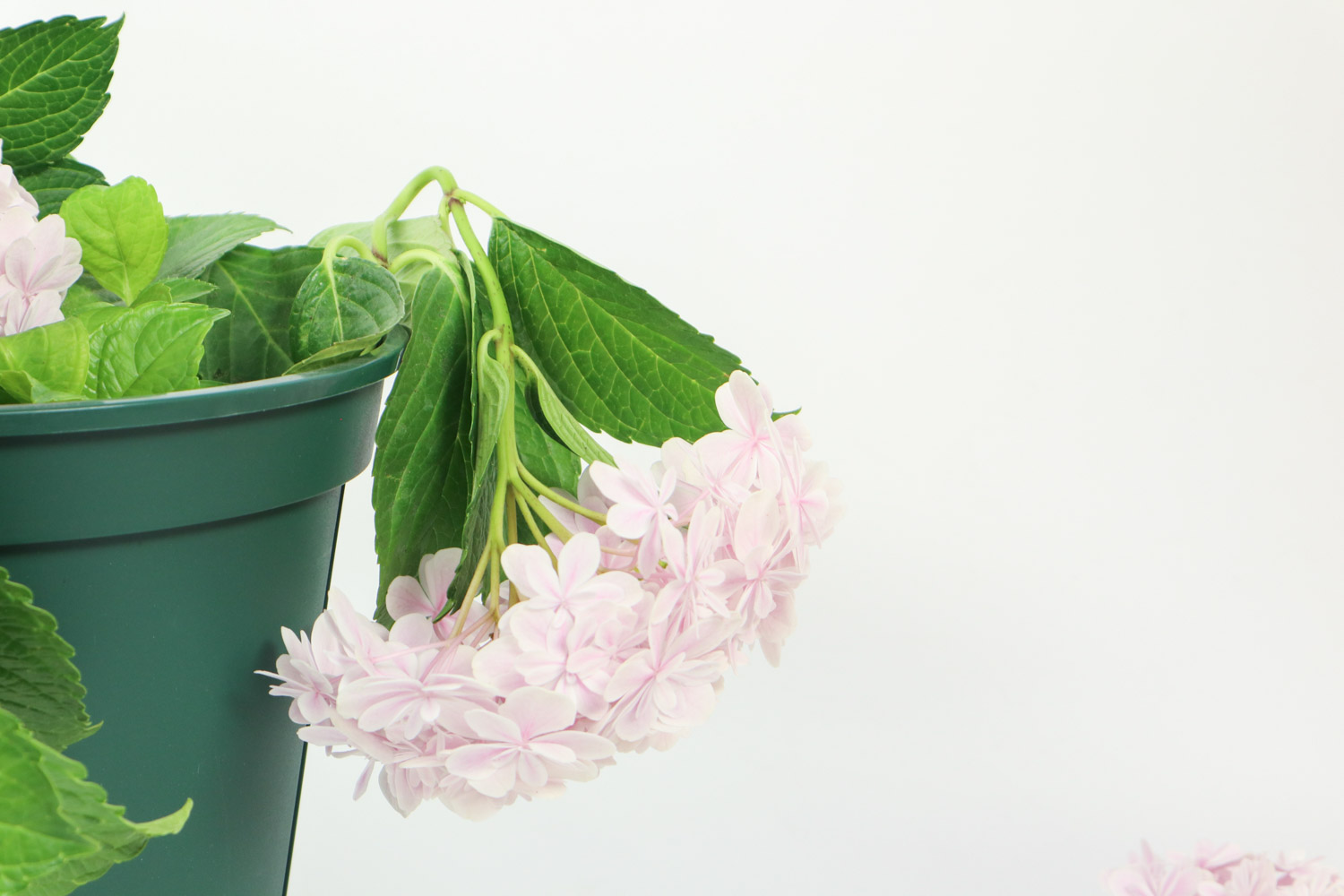Water and fertilizer management
Hydrangea likes fertilizer. During its growth, it is generally applied with rotten thin cake fertilizer and water every 15 days. In order to maintain the acidity of the soil, 1% - 3% ferrous sulfate can be added to the fertilizer solution for application. Frequent watering of alum fertilizer can make the plant branches and leaves green; During pregnancy and budding period, the application of 1-2 times of potassium dihydrogen phosphate can make the flowers large and colorful; The application of cake fertilizer should avoid dog days to avoid diseases and insect pests and root damage
Hydrangea has lush branches and leaves and needs more water. In spring, summer and autumn of the growing season, sufficient water should be poured to keep the basin soil moist. In summer, the weather is hot and the evaporation is large. In addition to pouring enough water, we should spray water on the leaves every day. Hydrangea avoid ponding in the basin, otherwise it will rot. After entering autumn, the amount of water should be gradually reduced
Four seasons maintenance
Hydrangea likes semi shade and humid environment and is not very cold resistant. Avoid direct exposure to the hot sun in summer, otherwise the leaves are easy to be scorched and yellow, the branches and leaves are easy to wilt and wither after frost, and the aboveground part of open cultivation withers and dies in winter. The new shoots germinate from the rhizome and bloom the next year. If they are potted in a greenhouse, they can remain evergreen
Key points of spring maintenance: for potted plants, prune dead branches and turn the basin for soil change. After serving the basin, apply dilute liquid fertilizer dominated by nitrogen fertilizer once or twice, which can promote the germination of branches and leaves
Key points of maintenance in summer and Autumn: it should be placed in the semi shade or under the curtain shed to prevent direct sun exposure in the hot sun and avoid yellowing and burning of leaves. Apply topdressing once or twice before and after flowering to promote the propagation of green leaves and flowers. After the flower stem is withered, it should be kept beautiful in time. The basin soil is often kept moist, but it is necessary to prevent ponding after the rain, so as to prevent the fleshy root of Hydrangea from rotting due to too much water
Key points of winter maintenance: after winter, the plants cultivated in the open field should be blocked up to keep warm and make them survive the winter safely; Potted plants can be placed in a warm place facing the South and facing the sun without cold wind. Although the dead leaves fall off in winter, the roots and branches still survive, and new leaves sprout the next spring
Soil replacement and pruning
Potted Hydrangea is usually turned over once a year. It is advisable to turn over the basin and replace the soil in the first ten days of March. When changing pots, the root system of the plant shall be trimmed to cut off rotten roots, rotten roots and long roots. After the plants are moved to a new basin, the soil shall be compacted, watered and placed in the shade for about 10 days, and then moved outdoors for normal management
In order to make the potted Hydrangea crown beautiful and blossom more, the plants should be pruned. Generally, after the seedlings survive and grow to 10-15 cm high, they can be picked to make the lower axillary buds germinate. Then select the 4 middle and upper new branches after sprouting, and remove all the lower axillary buds. When the new branch grows to 8-10 cm, the second coring shall be carried out. Hydrangea usually blooms on two-year-old strong branches. After flowering, the old branches should be cut short and 2-3 buds can be retained, so as to limit the excessive growth of plants and promote the growth of new shoots. After autumn, cut off the top of the new shoots to stop the growth of the branches, so as to facilitate overwintering. After such pruning, the plant type is more beautiful, which greatly strengthens the ornamental value


 how many times do yo...
how many times do yo... how many planted tre...
how many planted tre... how many pine trees ...
how many pine trees ... how many pecan trees...
how many pecan trees... how many plants comp...
how many plants comp... how many plants can ...
how many plants can ... how many plants and ...
how many plants and ... how many pepper plan...
how many pepper plan...




























